Look at him… I even want to take him home. THE Honda E strikes a balance, difficult to achieve, between “cute” — a technical term in design, believe me… — and seriousness. It doesn't differ much from Fiat's approach to designing the 500 with proven results: huge success and longevity.
The point where it is most out of tune with the Urban EV, the prototype that anticipated the E, is in the proportions, especially in the relationship between the 17″ wheels (larger, standard on the more powerful Advance, tested here), which look small, and the bodywork, which seems too big for them.
Part of the reason they look small is due to the actual dimensions of the Honda E, which isn't as small as it looks. It skims 3.9 m in length (10-15 cm shorter than typical SUVs in the segment), but is 1.75 m wide (equivalent to other SUVs) and exceeds 1.5 m in height — it's longer , wider and taller than a Suzuki Swift, for example.
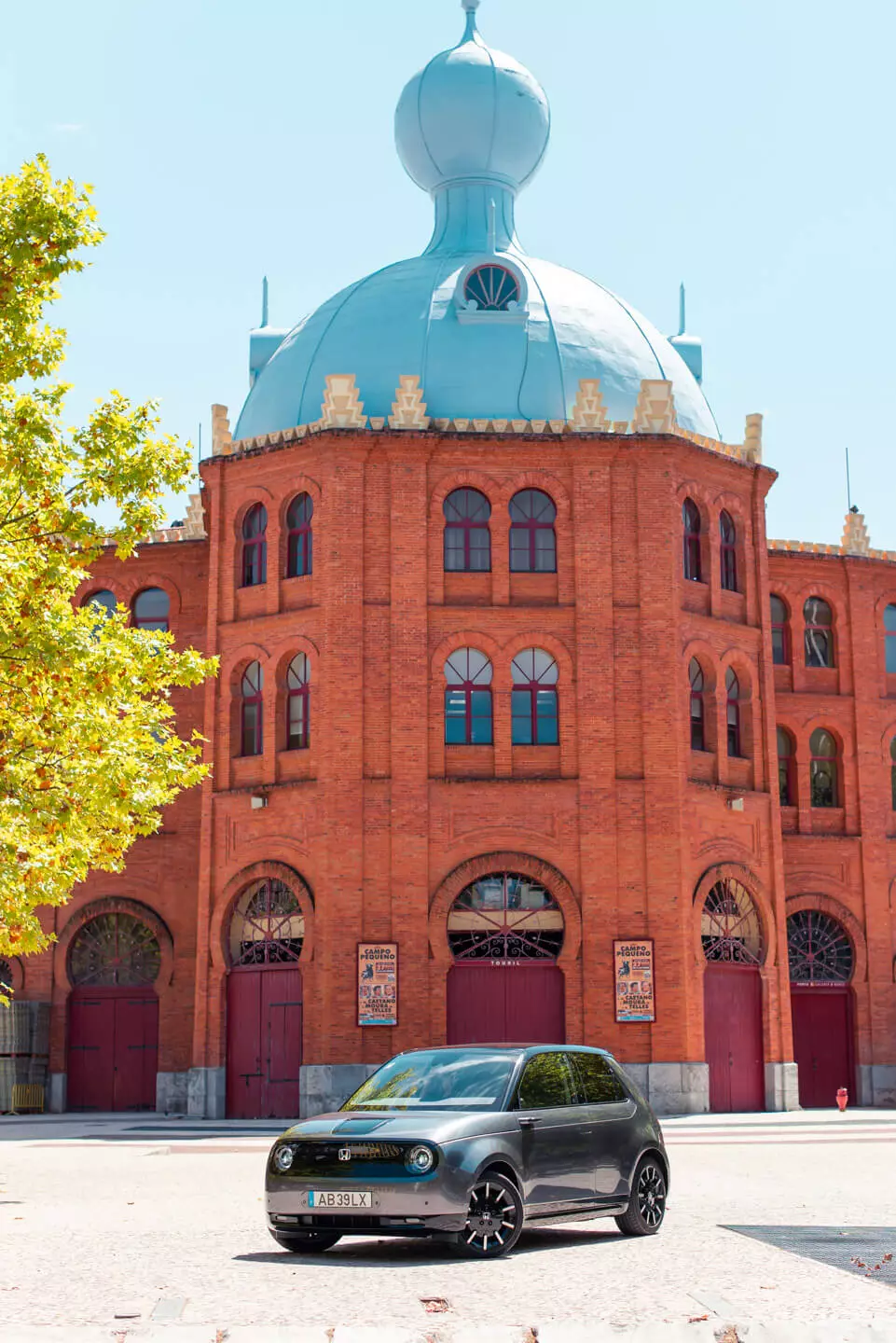
Its design full of personality attracts a lot of attention, most of it positive. There are also detractors, few, as with the 500, but no one is indifferent to it. It's also a stark contrast to what Honda has gotten us used to in recent years, where its models have been characterized by excessive visual aggressiveness — yes, Civic, I'm looking at you…
If the Honda E's exterior is a radical cut, what about the interior?
We're treated to a curtain of screens — five in all — but it's not a technologically inhospitable environment. On the contrary, it is one of the most welcoming interiors at this level, the result of the combination of the simplicity of its design and the materials that make it up. It is more reminiscent of the atmosphere you would find in a living room than the typical one in a car.
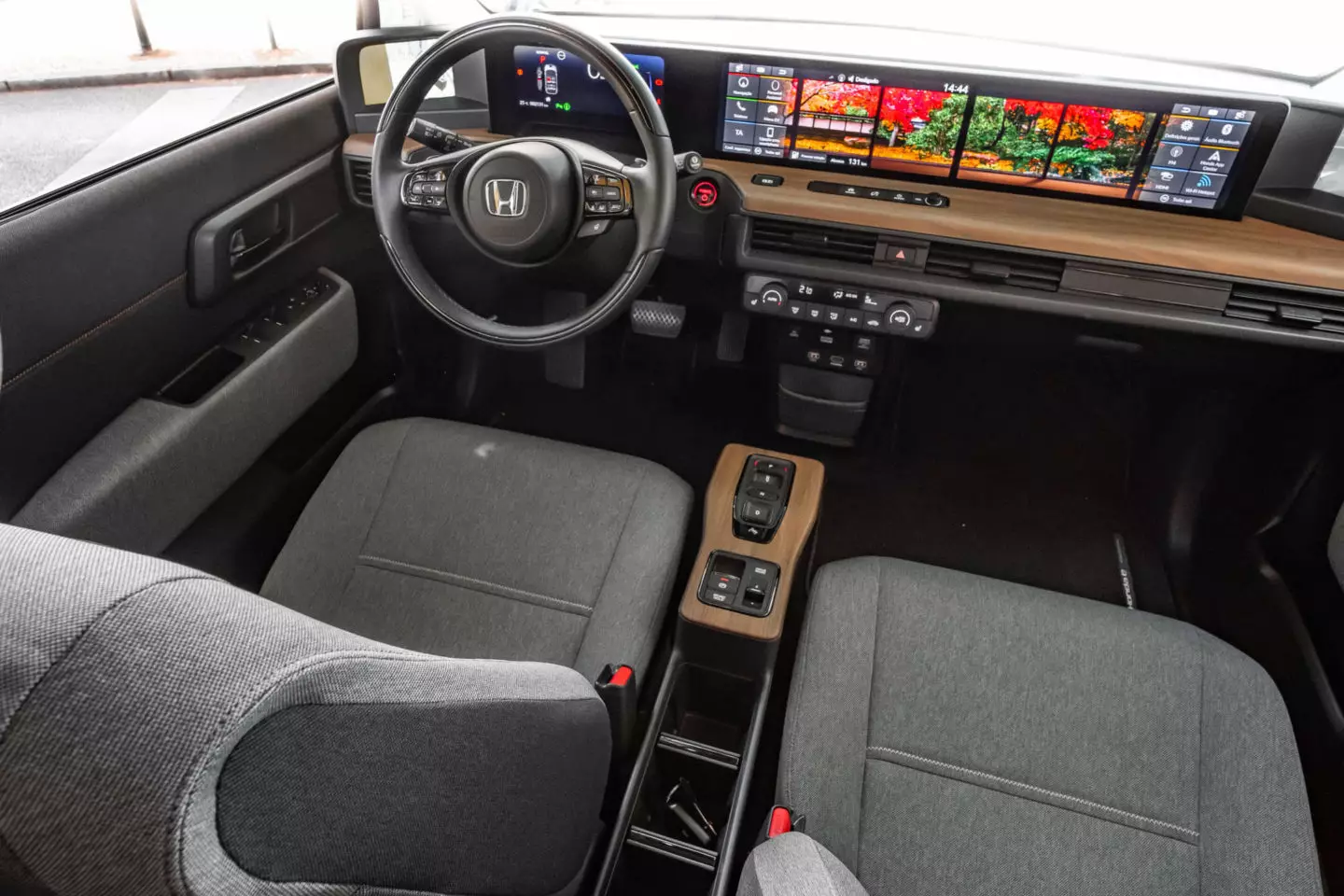
The feeling of space at the front is reinforced by the absence of a typical center console, which also contributes to the pleasantness on board — pleasantness, perhaps the word that best defines this interior .
We have many fabric-covered surfaces (like on the doors) and the wooden strip (albeit fake) is very well done in texture and touch, giving color and an interesting contrast to the dominating force of the five screens. Hard plastics, typical of the segment, are also present, but most are out of sight, occupying the lower parts of the interior.
It doesn't stop with appearances...
…there is real substance to the choices made by Honda's designers, although when we first entered the Honda E it can be a bit intimidating, due to the curtain of screens that connect in front of us.
On-board scanning is high, but we quickly realized that when it comes to operating the most basic or frequent functions (such as climate control), the friendly E is quite accessible and easy to understand.
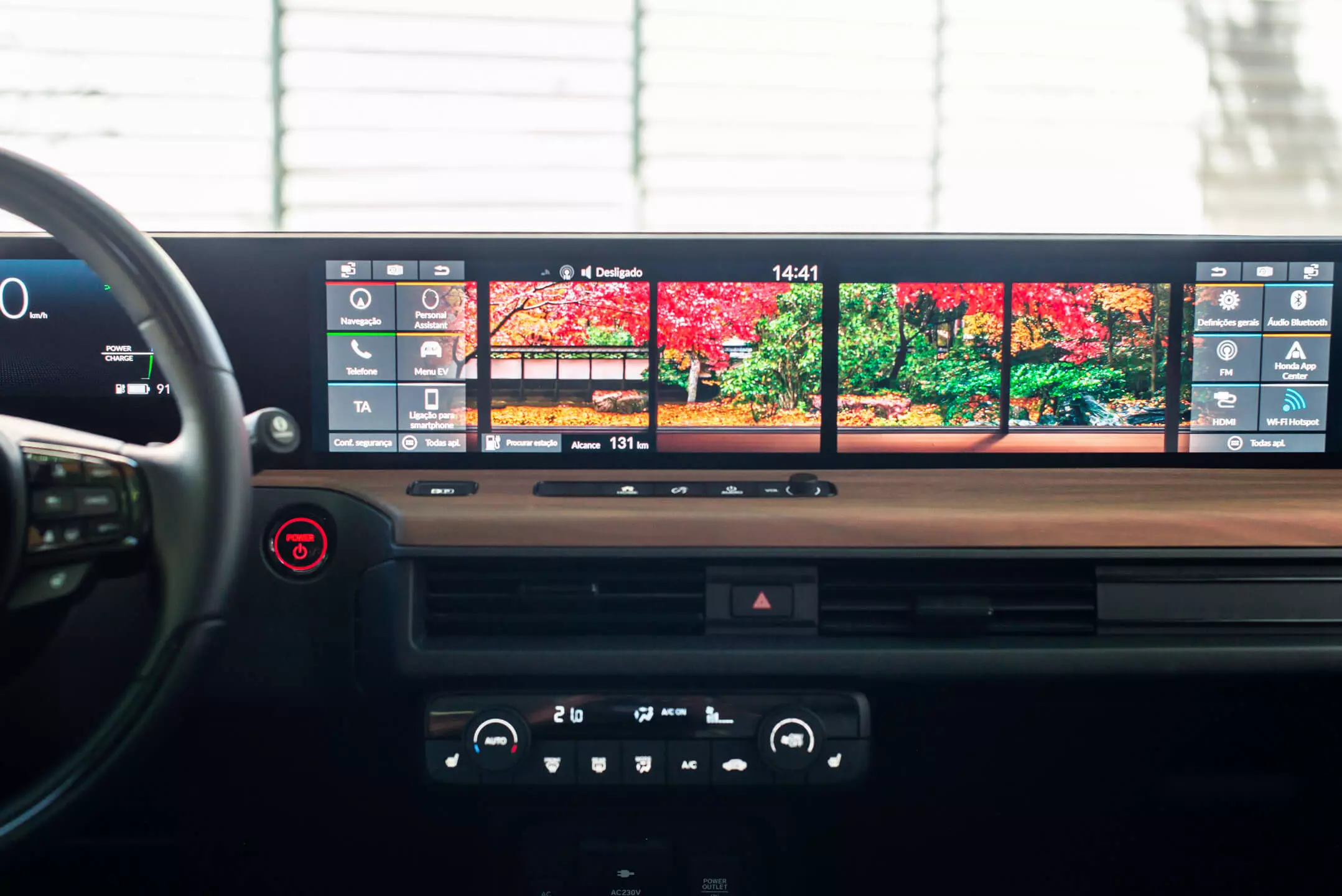
However, the infotainment system represents a giant step forward from what we've seen so far on other Hondas. Simpler to use and more pleasing to the eyes, it only lacks for its somewhat slow response and also for its vastness.
There are many options, ie menus, that we have at our disposal — some only accessible when the vehicle is stationary — and sometimes they even “spread” across the two screens. Was it really necessary to have two screens? I have serious doubts. They are nonetheless an intrinsic part of the design and part of its appeal, but their need is questionable.
Subscribe to our newsletter
However, it facilitates the operation of infotainment by the passenger (searching for radio stations or entering a destination in the navigation), and we can even change the position of the screens at the touch of a virtual button in case of need.
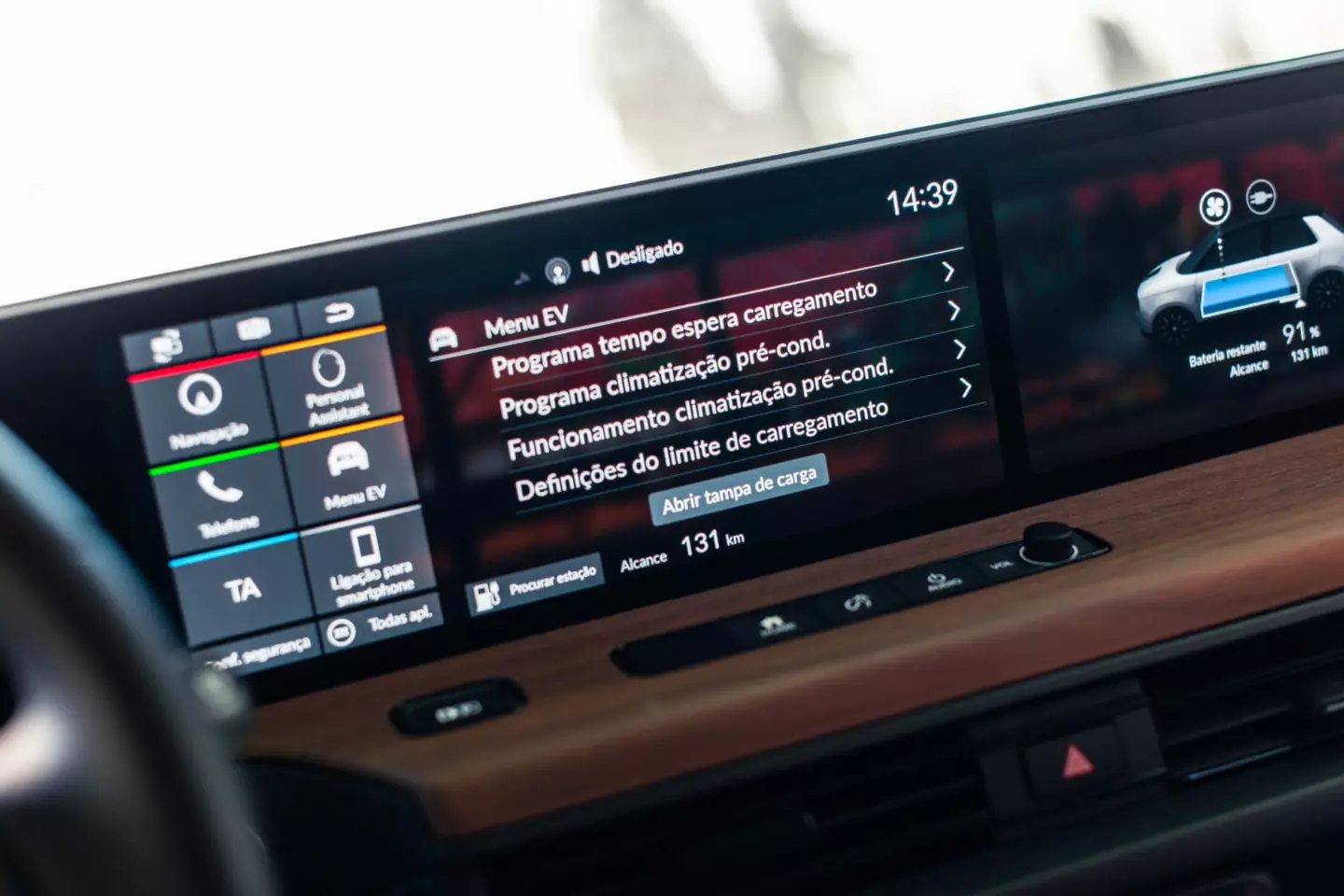
The virtual mirrors
Time to get going. First observation: the driving position is somewhat high, even with the seat in its lowest position. It is probably due to the fact that the floor is also high (batteries are positioned on the platform floor) which prevents the bench from lowering further.
The seats themselves, upholstered in a fabric more like a sofa, are quite comfortable, but not very supportive. The leather-clad two-arm steering wheel also lacks some breadth in depth adjustment — but the size and grip are at a very good level. However, this is not a critical factor, and we quickly adapted to the Honda E's controls.
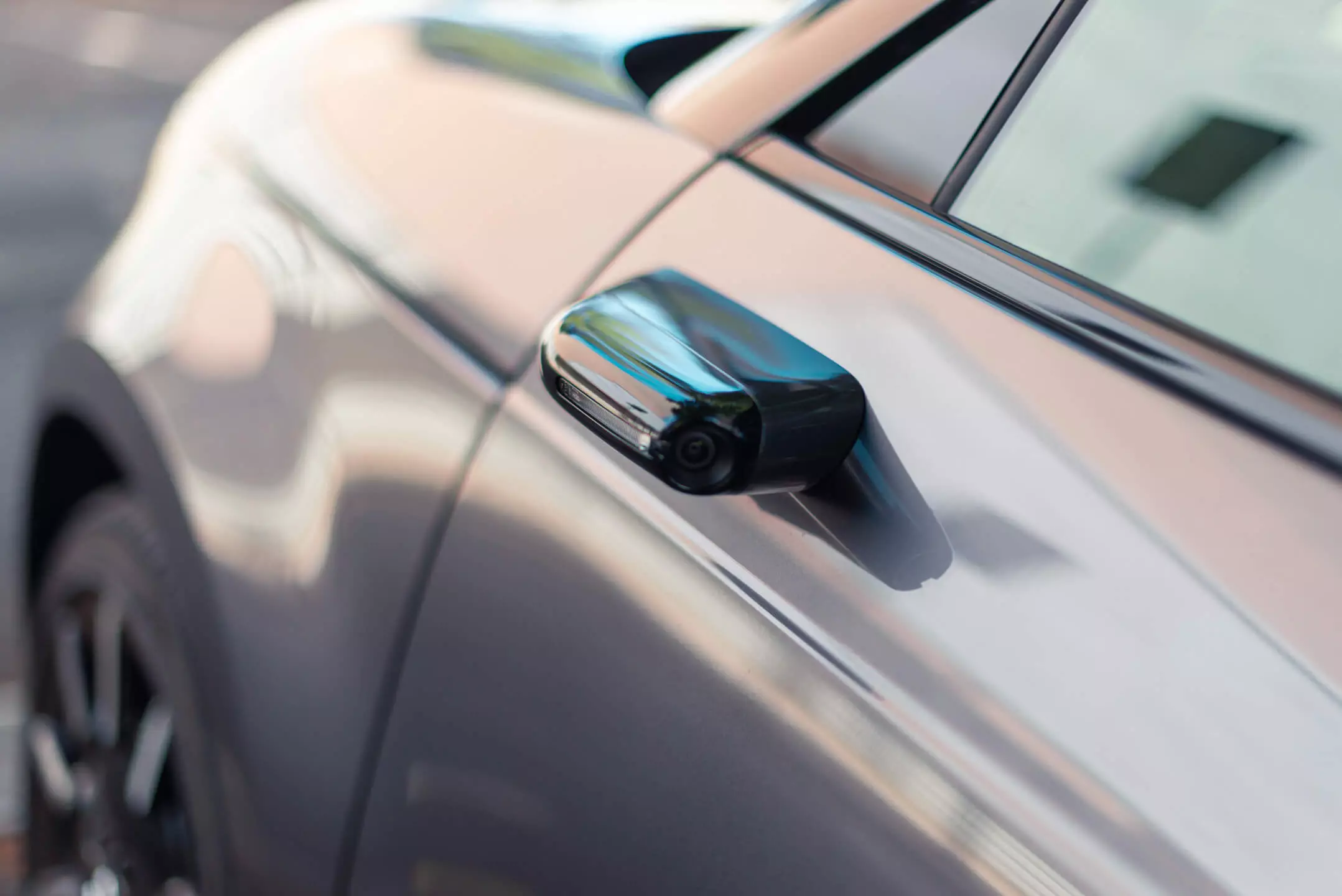
Before starting, look in the rearview mirror and… dammit… The rearview mirror is not in the expected place. Yes, the Honda E also comes with virtual mirrors, with two of the five screens (those at the ends) showing the images captured by the exterior cameras, positioned where the… mirrors should be.
It works? Yes, but… Not only does it require habit, but we also lose the perception of depth that only a mirror can achieve. At Honda, you must have noticed this, because every time we turn on the blinker to, for example, change lanes, horizontal marks appear on the dedicated screen that help us to better understand how far away the car behind us is.
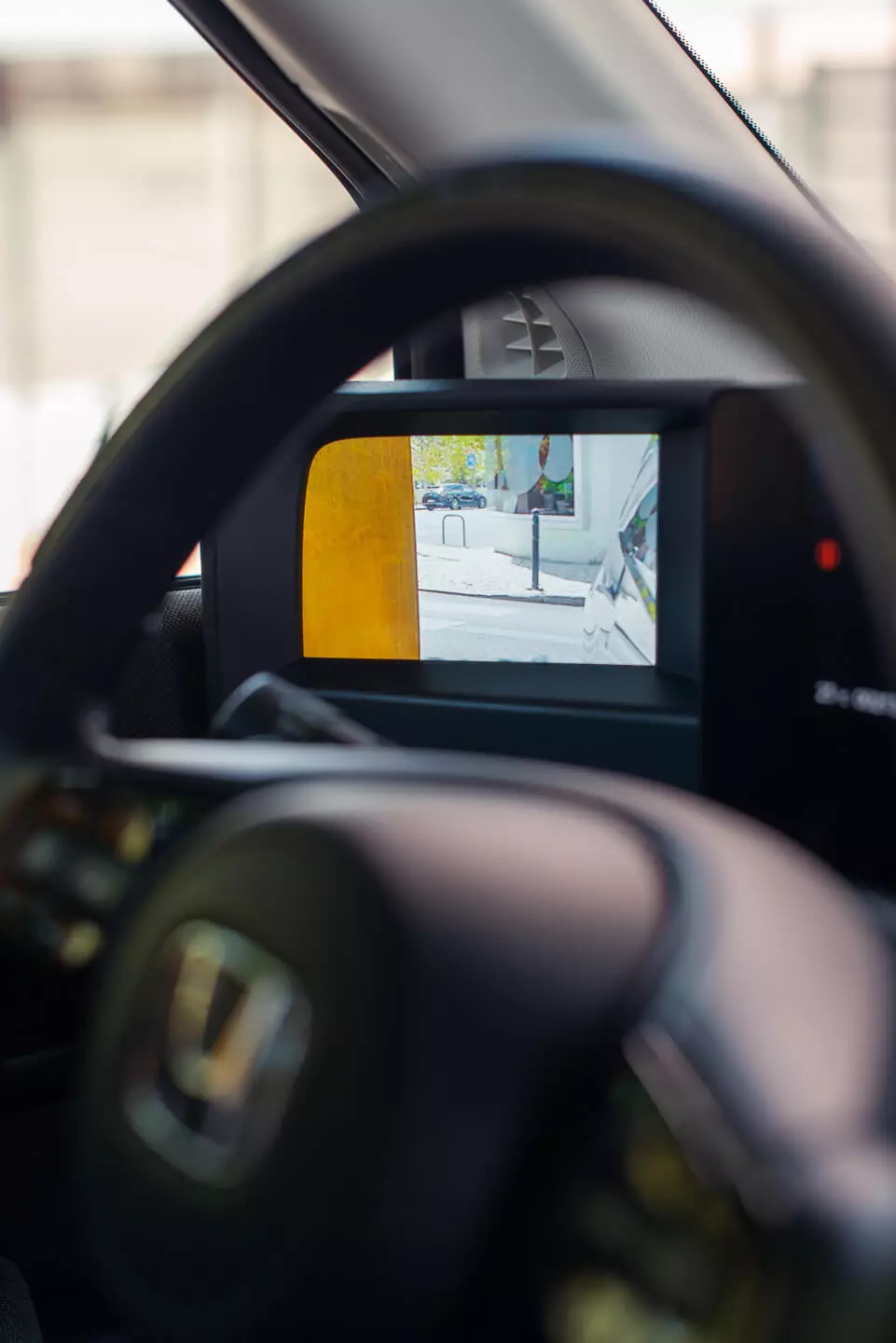
Even during parking, the lack of distance awareness is annoying. Despite the excellent maneuverability of the E, I ended up using the center mirror (which can also show the image of the rear camera) and the classic head-swivel, instead of the rearview mirrors or even the 360º view, to “fix” the car in parallel. .
However, it is worth noting the excellent quality of the image provided, even at night. As long as there is some light source (street lighting, etc.), the image is quite sharp (even with a pronounced glare effect around headlights and other localized light sources), only grainy when there is virtually no light .
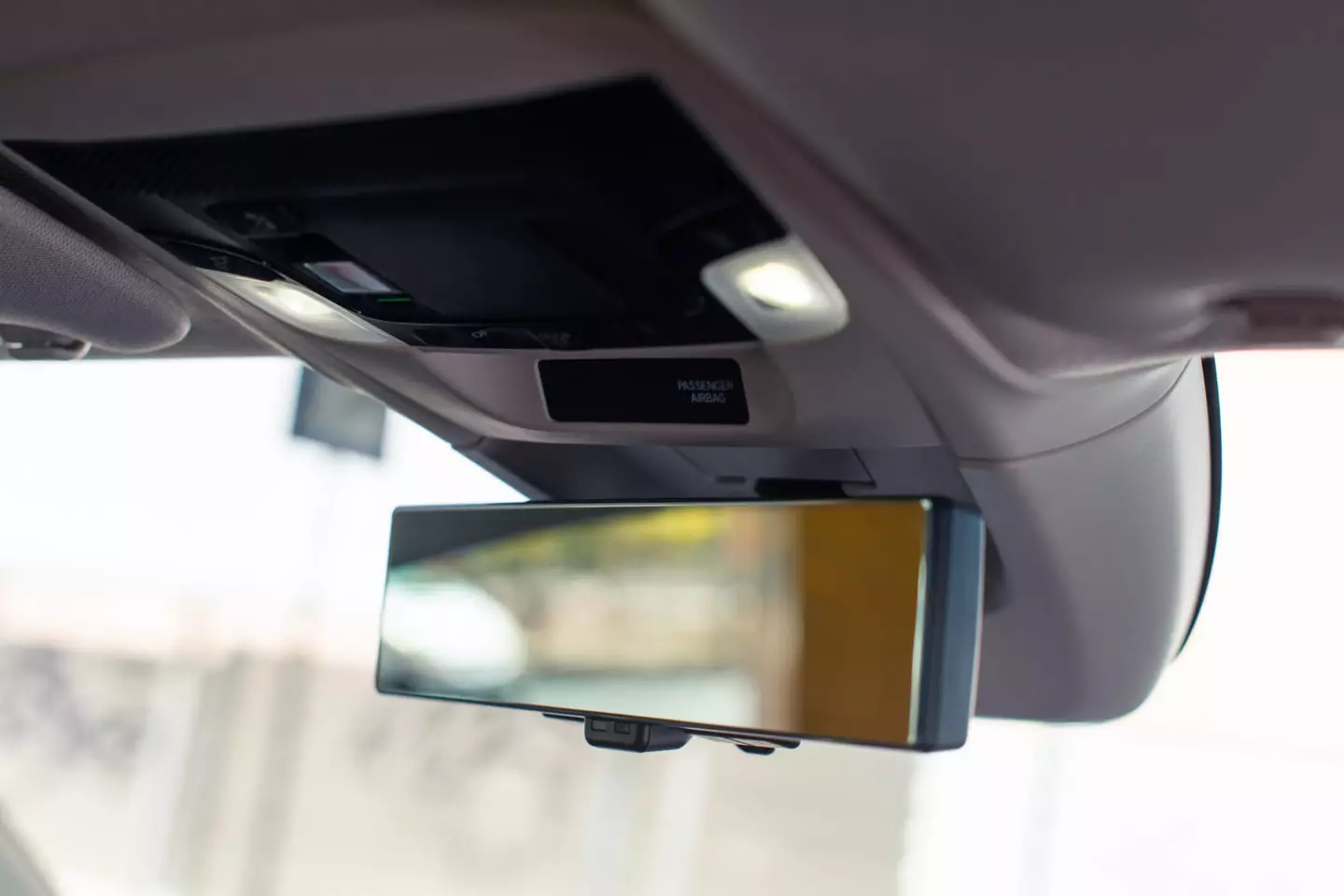
Central rearview mirror has classic operating mode…
Now on the road
If standing still, it's very easy to like the Honda E, when in motion I think it would be hard for anyone to resist its charms. The performances are quite convincing — 8.3s in the 0 to 100 km/h, for example — and having immediate access to them, without hesitation, give an effervescent character to the compact model.
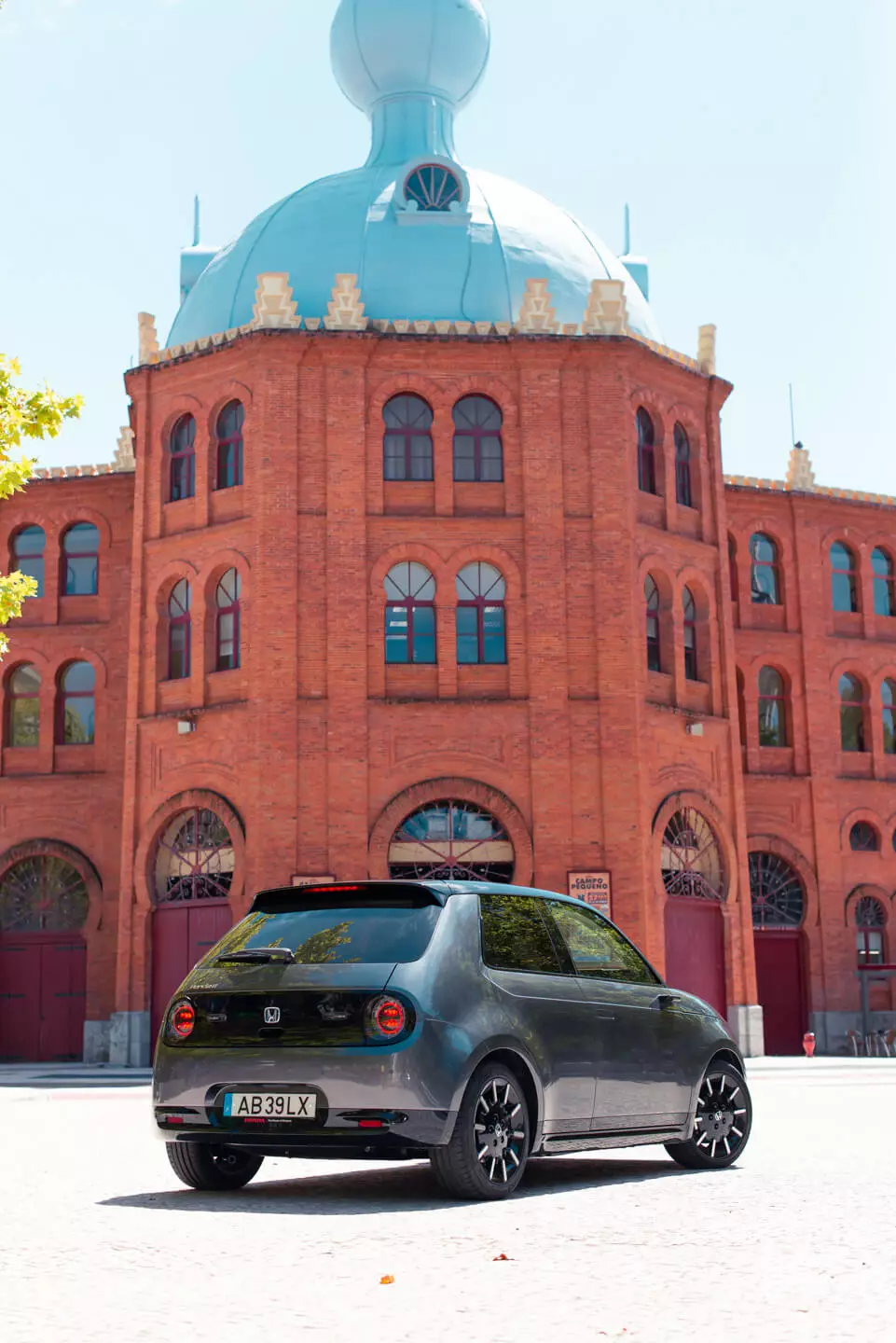
The Honda E controls are light but with very good levels of response and in perfect harmony with the smooth set-up of the chassis. However, despite the innate softness, the Honda E combines it with levels of precision and control superior to those I found, for example, in the Opel Corsa-e.
It really seems to be the best of both worlds, as it offers good, above-average levels of comfort (in the city) and refinement (at high speeds), while driving is more dynamic and captivating than most.
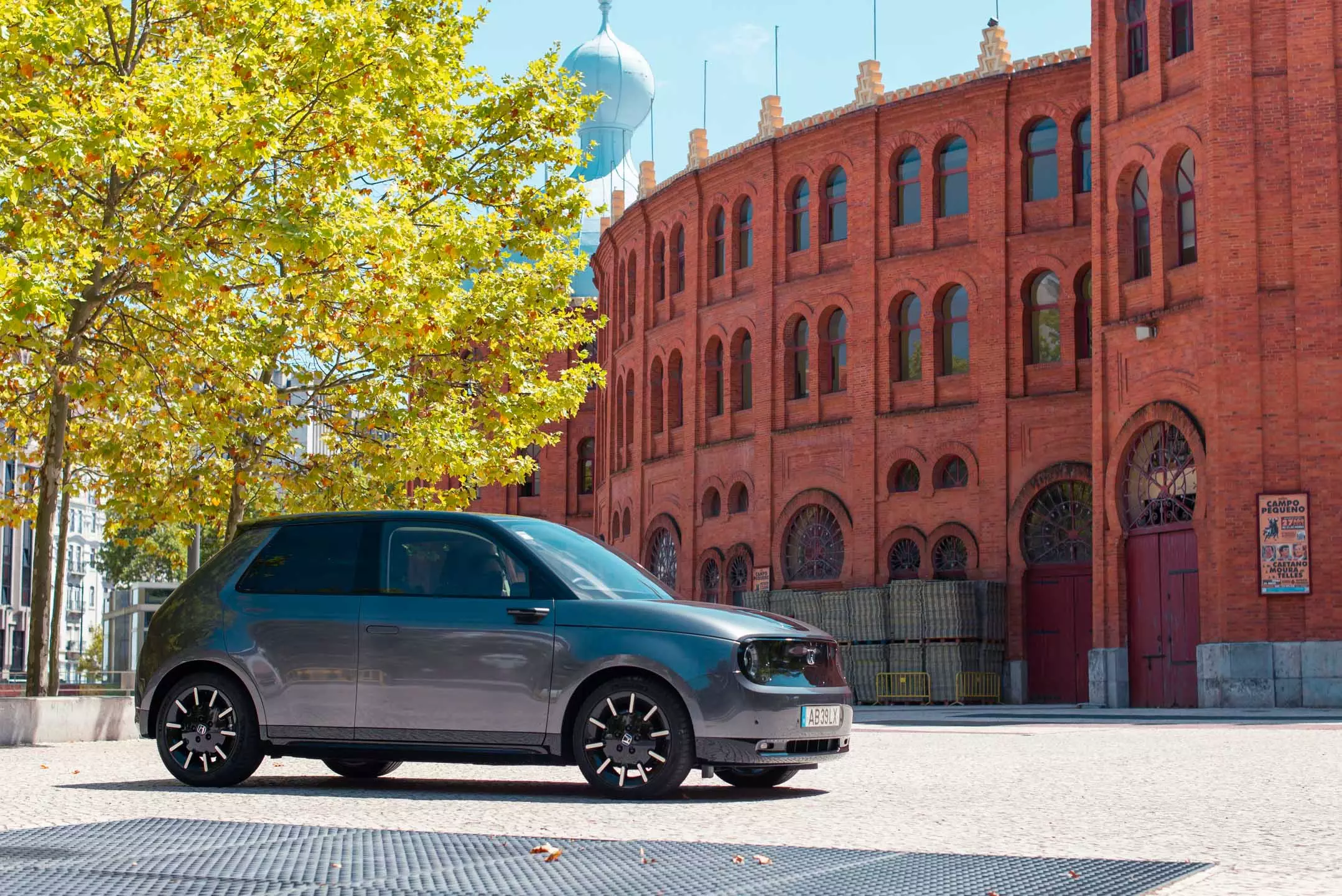
If in an urban environment, where you'll spend most of your days — even due to the limited autonomy, but we'll be right there... —, the excellent maneuverability, visibility and comfort stand out, when we decide to go looking for some curves or even simple roundabouts, this is where the Honda E excels.
It stands out because it weighs more than 1500 kg — blame the “fuel tank”, aka 228 kg battery — and the soft suspension setting doesn't translate into uncontrolled body movements — quite the contrary… It's not a sports car, but the composure revealed at higher speeds makes a very good impression and is genuinely interesting to drive — lacking the comparison with the Mini Cooper SE, perhaps the only one capable of equaling the E in this department.
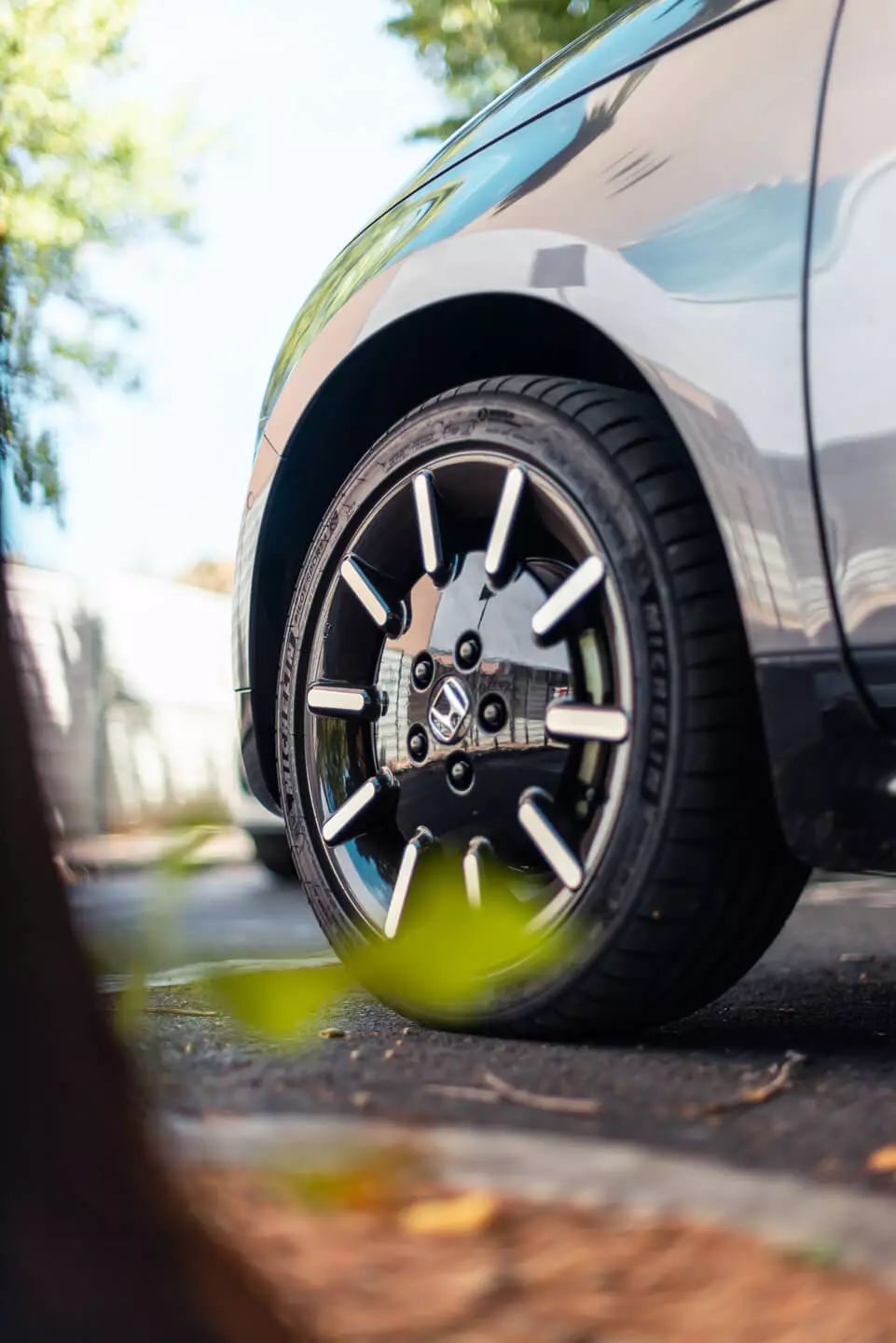
shaky defense...
If the test ended here, the perception is that this would be one of the best small trams on the market and you wouldn't be wrong in that assumption — it's, for now, my favorite in the segment for everything I mentioned above, especially for the driving experience .
However, the Honda E's defense case starts to slip when we have to deal with aspects of a more objective and practical nature.
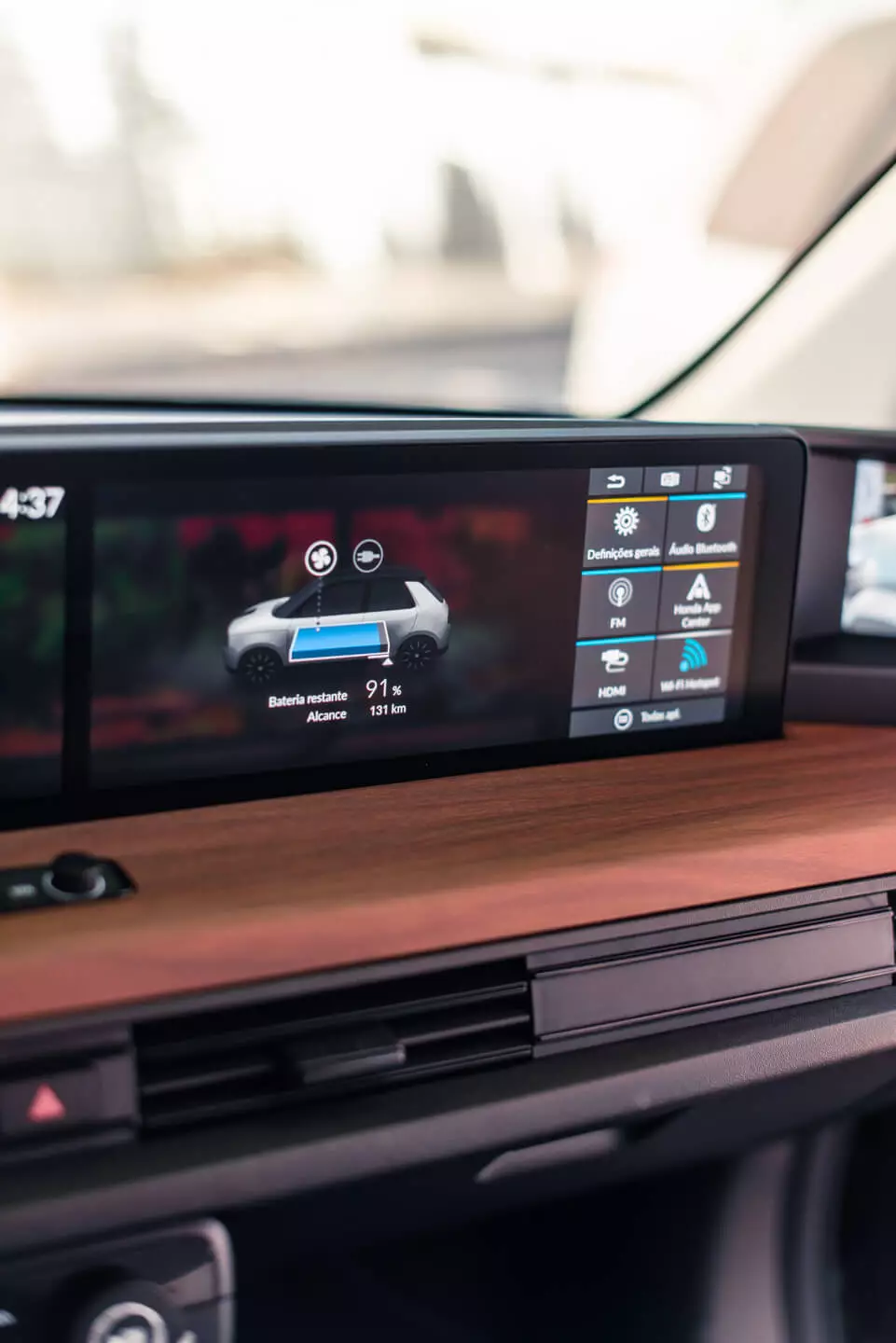
The “elephant” in the room is its autonomy, or rather the lack of it. 210 km are announced for the most powerful Advance ("normal" version, 136 hp, advertises 222 km), but they will hardly reach them in the real world — frequent loadings can be expected. Much less than potential rivals such as the leader Renault Zoe, which advertises nearly 400 km, or the Opel Corsa-e that I have tested, which comfortably exceeds 300 km.
Part of the blame is on its battery of just 35.5kWh, but the Honda E turned out to be something… wasteful. The brand advertises practically 18 kWh/100 km in combined cycle and, as a rule, we always walk around that value — more than what I got with other similar trams.
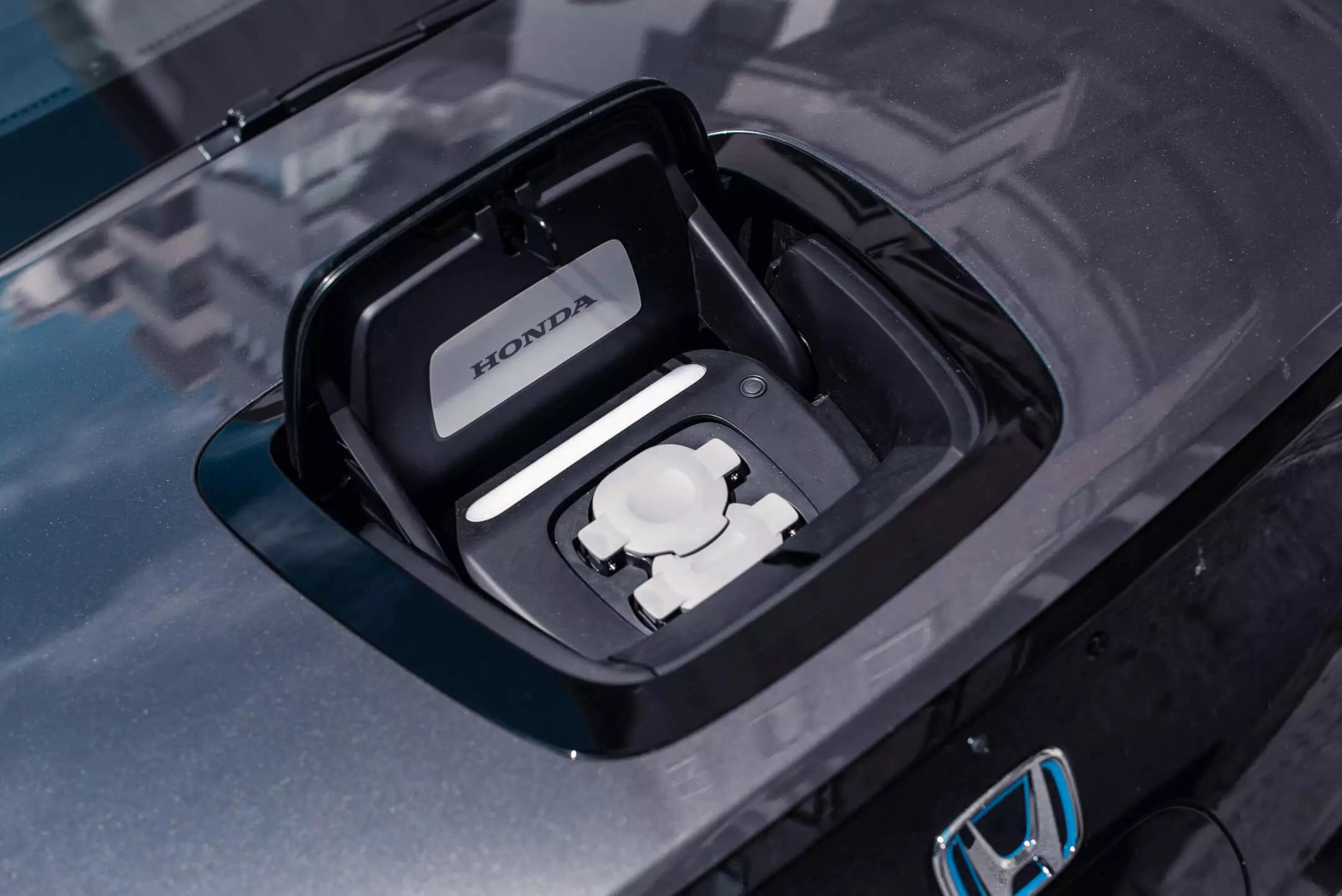
Not even in the urban jungle, where there are more opportunities for regeneration, consumption dropped much more — it stayed at 16-17 kWh/100 km. I got to do 12 kWh/100 km and even a little less, but only in the flat part of the city of Sete Colinas, next to the river, with some traffic and speeds that did not exceed 60 km/h.
If we want to enjoy the very good dynamic qualities and performance of the Honda E — as I have often done — consumption quickly rises beyond 20 kWh/100 km.
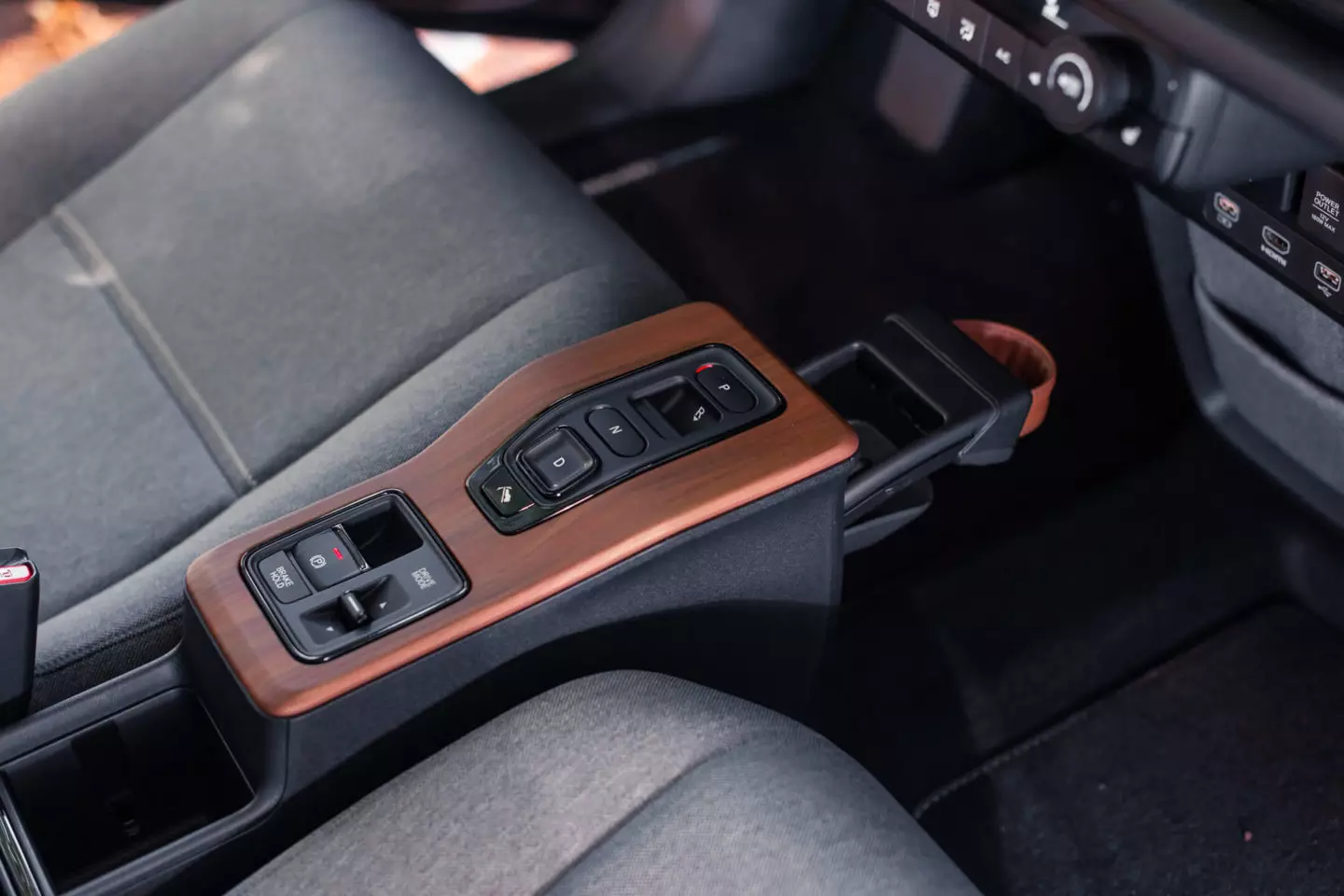
The center console hides a retractable cup holder with a leather handle.
Is the right… electric car for me?
Even more shaky is the defense of the adorable Honda And when we refer to the other “elephant” in the room — yes, there are two… — what is your price . We could even more easily accept its modest autonomy if it had a lower price than rivals or potential rivals, but no…
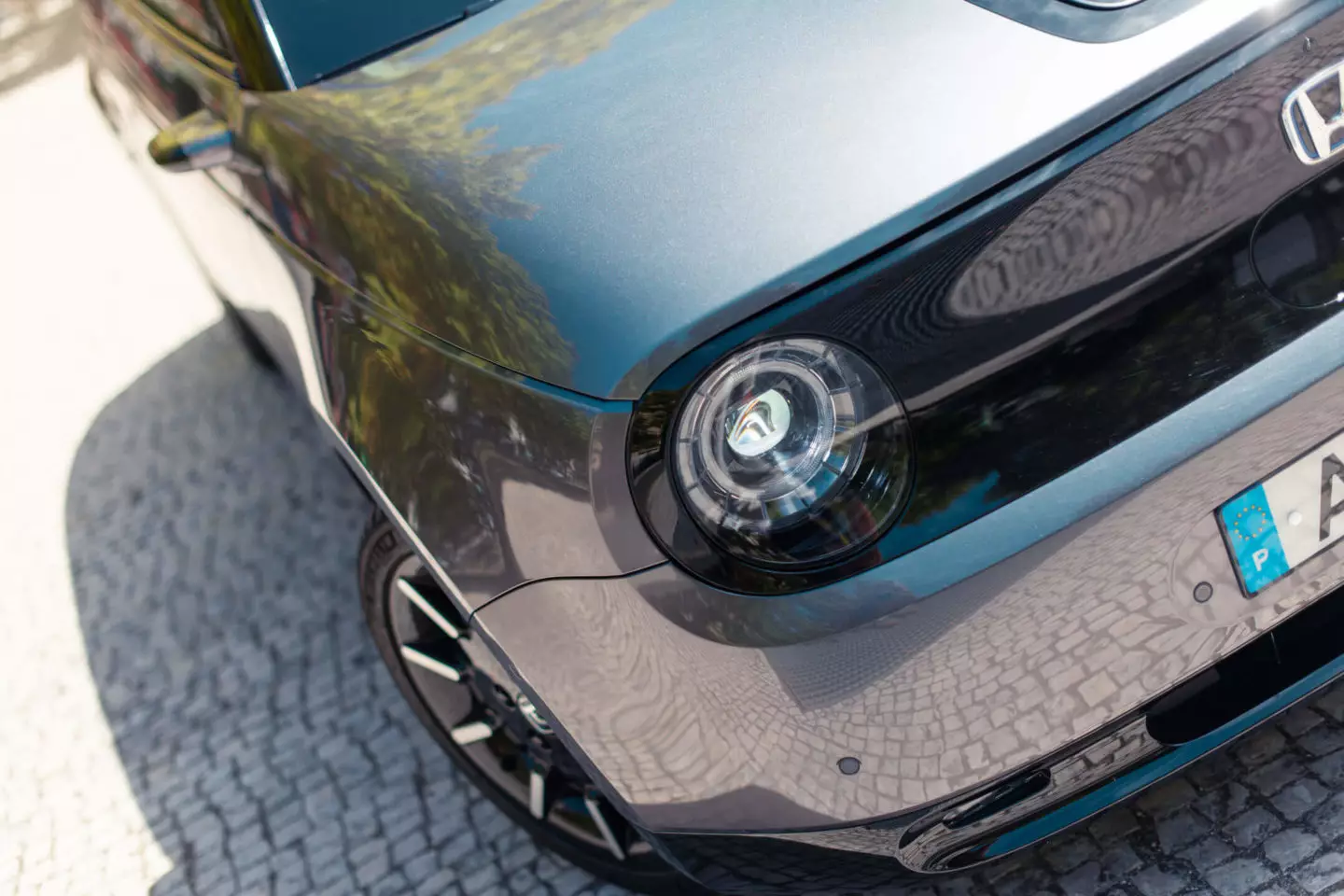
The Honda E is expensive, not only because it is an electric, whose technology is still absurdly expensive, but it is also expensive compared to its rivals (especially considering the autonomy), even considering the justification of the Japanese brand in giving a more “premium” positioning to your model.
The Advance, the top version, starts at a high 38 500 euros, even taking into account the extensive list of standard equipment. It is even more expensive than several versions of the more powerful and faster Mini Cooper S E — the one that conceptually comes closest to the E, also “accused” of being expensive for the autonomy it advertises (+24 km than the Japanese model).
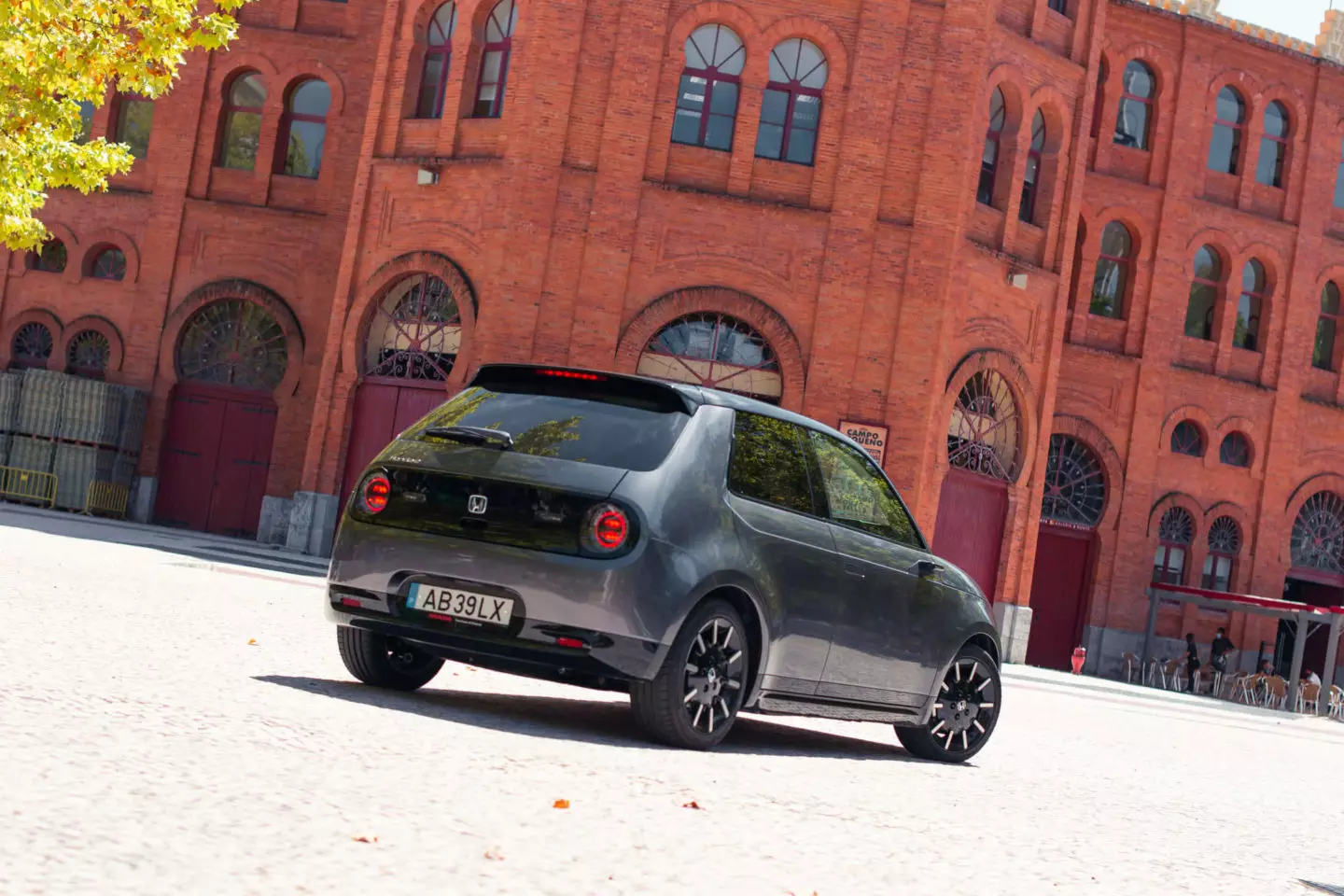
In this case, recommending the Honda E would have to be the regular version, of 136 hp (a little slower, but goes a little further), which starts at an equally high 36 000 euros. Even so, the odds don't add up when compared to potential rivals with identical powers, all of whom are able to comfortably exceed 300 km on one charge.
